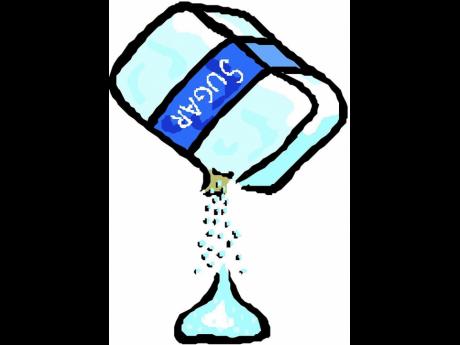Financially Speaking | The sweeter side of sugar
Jamaica has been slow to domesticate sugar; to effectively reposition as an independent market no longer secure in the preferential bosom of Europe. And it has had a telling effect on the financial health of the industry in the post-divestment era.
Guaranteed prices and quotas will soon no longer be the order of the day, although Europe has said its markets will remain open to Jamaica and other sugar-producing countries to which it is tied by history. The final transition is in 2017.
Under preferences and state ownership, the underinvestment in sugar was bad - but not always bad for business because the cash kept rolling in from quota sales; and the government was prepared, from time to time, to subsidise the planting of fields and do just enough retooling of factories to churn out the sugar crystals.
The industry and its markets, as it turned out, were mostly fuelled by guilt and an oligopolistic culture.
Into that ecosystem stepped an over-optimistic set of private sector investors, who, for the past six years since Jamaica divested its sugar headache and creaky factories to them, have been struggling to turn sugar into a moneymaking venture. After all, market-driven rum has managed it, so why not its first cousin. The answer to that is obvious - 'rum'.
Where Jamaican officials were myopic was in the retention of the sugar distribution structure that worked well when Europe had first call on Jamaica's sugar, but evolved into a system that is hobbling private business whose only legacy interest is whether this year's profit is better than last year's.
It turns out that commercially viable sugar is almost a contradiction in terms. Long Pond, which has claimed other private-sector victims before, including an established near-two-century-old rum king, has done so again. The factory was producing sugar at $40 per pound but earning $23 for the product, said owner Everglades when it confirmed two weeks ago that Long Pond was quitting the next crop.
Some day, there ought to be a study on why Long Pond is the place where sugar investments go to die.
Seprod, on the other hand, is doubling down. With around $3 billion of investment to safeguard, and losses to recoup, the company has managed to wrest its product out of the centralised marketing pool. Through subsidiary Golden Grove, a new branded sugar is to be rolled out in Jamaica and Caricom markets.
Golden Grove will not be a pioneer in this regard. Jamaica Cane Product Sales (JCPS), the agent through which sugar distribution was centralised in the era of preferences, has long had a brown sugar product on retail shelves - branded Jamaica Gold - that is packaged in 1kg and 2kg sizes.
Earlier this year, JCPS upped its game with similar sizes of granulated sugar packaged from bulk imports, which it markets under the generic label of 'refined cane sugar'. In September, JCPS was joined by DK Processors Jamaica with Diamond Krystal in the granulated sugar market. Their products sit side by side on mainstream grocery shelves. DK Processors also distributes icing sugar under the same brand.
Still, there is a different expectation of Seprod's market entry, much of which surrounds its well-established track record in manufacturing and distribution. The real reason, however, may well be more basic, if not cosmetic. Seprod's products on retail shelves are well-packaged and generally attractive to consumers. They spell quality. And that element has long been missing for sugar.
Sugar is largely displayed on retail shelves in transparent plastic baggies that grocery operators cheaply package from bulk supplies distributed by JCPS. A bag of all golden brown sugar is a rarity. But it is standard fare for multicoloured crystals ranging from dark brown to golden to end up in one bag along with generous helpings of sediment. In this masquerade of the commodity as consumer product, we get sugar with essence of factory.
Jamaica's sugar officials may be slow to act, but they are not blind to these realities. With clear signs that the domestic market is evolving, there is finally movement to develop standards for labelling and packaging of retail sugar.
In the final analysis, however, whether the loosening of the reins on sugar marketing agents, quality sugar in pretty packages and distribution to regional neighbours can reorient the industry towards profit, only time will tell.
If all else fails, the consolation is that sugar sold to Europe will remain duty-free - it's just that the cost of producing the commodity may outperform the price the market will pay for it.

